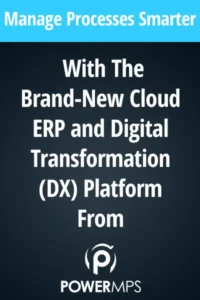The term “paperless office” was coined by Micronet Inc. in 1978. At the time, it caught on pretty hard as the ideal for the office of the future. How often do you see paper in Star Trek or any other future-based, high-tech science fiction? Even 2001: A Space Odyssey (Kubrick) presented space travel in a completely paperless environment. The film’s props list included “a 2001 newspaper to be read on some kind of television screen.”
Yet paper use doubled between 1980 and 2000. In 2017, offices used more than 400 million metric tons of paper. In 2018 the United Nations predicted paper usage would rise by 50%.
And here we are in the year 2021, where printed book sales still outstrip digital book sales worldwide. The typical employee still uses around 10,000 sheets of paper per year at a pace of 34 pages per day. The average company increases its paper usage by 25% year-over-year.
How have we gone so long without realizing the “paperless office” dream?
The Failure To Eliminate Paper
 Perhaps the most common reasons for paper usage and printing in the office have been for memos (or interoffice communications), records filing, and signatures.
Perhaps the most common reasons for paper usage and printing in the office have been for memos (or interoffice communications), records filing, and signatures.
Well, we all know what happened to memos and interoffice notes. The invention of email significantly reduced the need for physically written communications within the office setting, and chat software and text messaging all but ended written memos. But let’s be honest, it was also meant to minimize phone calls between employees and help dwindle unnecessary meetings. While it may have practically eliminated the former, it has had little to no effect on the latter. The same goes for reducing paper usage. Rather than avoid passing out a newsletter or interoffice message on paper, what happened? Every single employee printed out the email. So, the same amount of paper gets used. It’s just less time spent printing and handing out that paper on the part of the person sending the message.
Signatures, however, are a rare instance where paper-reduction was truly realized. At first, contracts had to be mailed back and forth. It was a lot of waiting and a few cents in postage. But it was the same stack of paper. Then people started faxing contracts. This practice tripled or quadrupled the amount of paper and ink used as each fax created a duplicate of the document on the other end. Faxed document sharing remained a staple until the scanner stepped in to allow contracts to be emailed. However, the physical signature still required at least one page of any agreement to be printed out and rescanned.
Then, finally, digital signatures took hold. Companies such as Sign Server, I-Safe PDF, and Docusign came out with secure options for contracts to be securely sent and virtually signed, complete with standardized cybersecurity measures. Today digital signatures have advanced enough to allow even banks, healthcare, and government entities to accept signatures using e-sign technology. While growth in this area was relatively slow and steady over the past decade, social distancing in 2020 created a significant increase in the use of digital signature platforms. And signs point to continued use as companies begin to head back to a semblance of regular business.
But, while esignatures may be taking a more permanent hold, digital record keeping is still something many companies hesitate to implement. This reluctance can be caused by several considerations, including the cost for conversion, methods of storage, and security of information.
Depending on the age and type of business, the number of past records to be scanned and stored can become a monumental task. Healthcare, finance, insurance, and law are just four industries where this issue could be incredibly daunting.
The method of storage and security is also a significant issue for these and other groups as documents containing sensitive personal and corporate information need to be thoroughly protected. Selecting between off-site, third-party, or company-owned and operated servers is a careful balance between digital security, capabilities, and cost. The result is that many businesses are satisfied keeping their paper record system or creating a hybrid environment rather than take on the investment and potential risks of going completely digital.
People Need Paper
But the costs and security of going digital are not what keeps the average office worker printing thousands of sheets per year. In reality, people have a significant attachment to the printed word and tactile engagement specifically. Studies have consistently shown that screens not only drain more mental resources but also impair focus and reduce reading comprehension.
Another issue with a truly paperless office is the inability to take hand-written notes. Whether in meetings or the margins of a printed document, research shows people who write things down by hand remember the information better than those who do not.
So, while note-taking apps, digital business cards, and project management tools may seem like monumental steps toward the “paperless office” of which we have been dreaming since the late ‘70s, the truth is strategic companies are far from bucking paper or printing.
Print Management Can Help
But not being “paperless” does not mean a business can’t be progressive or take an active role in managing their paper and print use. Innovative companies have an excellent opportunity to help reduce waste and their bottom line by partnering with print management services to become “paper-light.”
Using systems like PowerMPS, managed print services or MPS Software can provide printer data collection to properly track the use of paper, ink, toner, and other materials throughout the business – even at remote and home office locations. This information can help companies build better internal processes to address paper use and the needs of their employees. A strategic print management partner can often help companies reduce hardware costs, reduce output waste, and reduce energy consumption. The result is an environmentally friendly, cost-effective, “paper-light” ecosystem that allows both businesses and employees to thrive.







